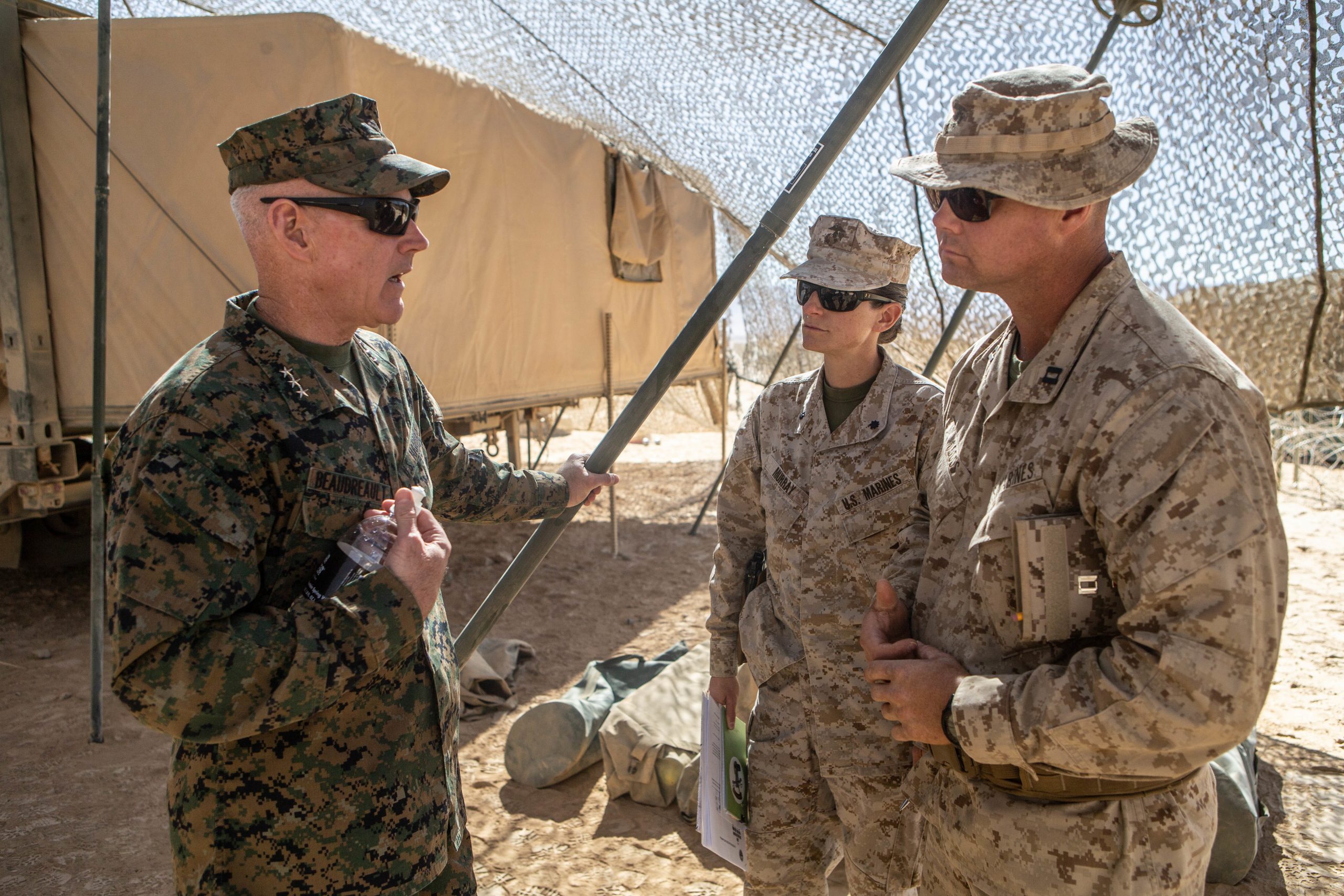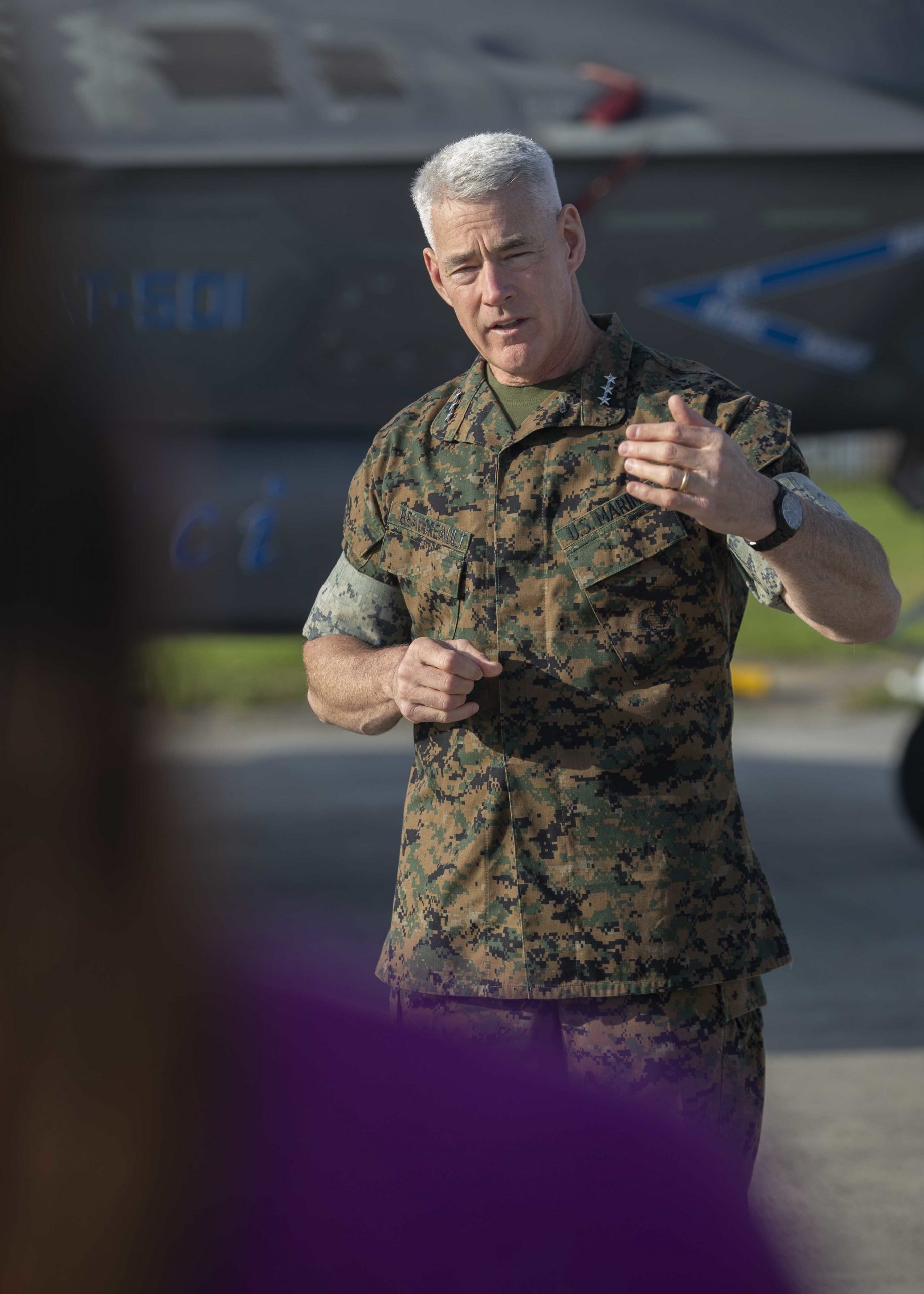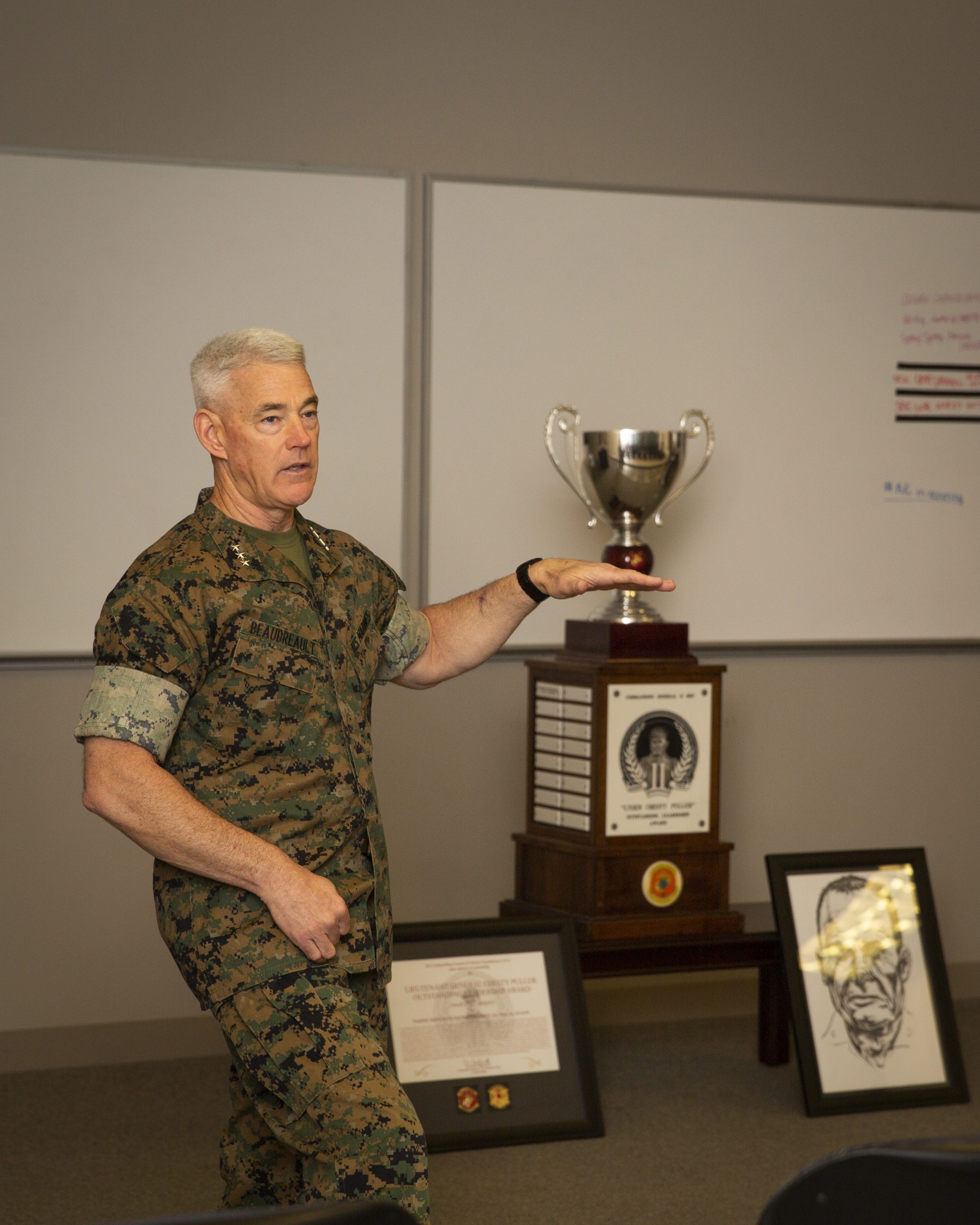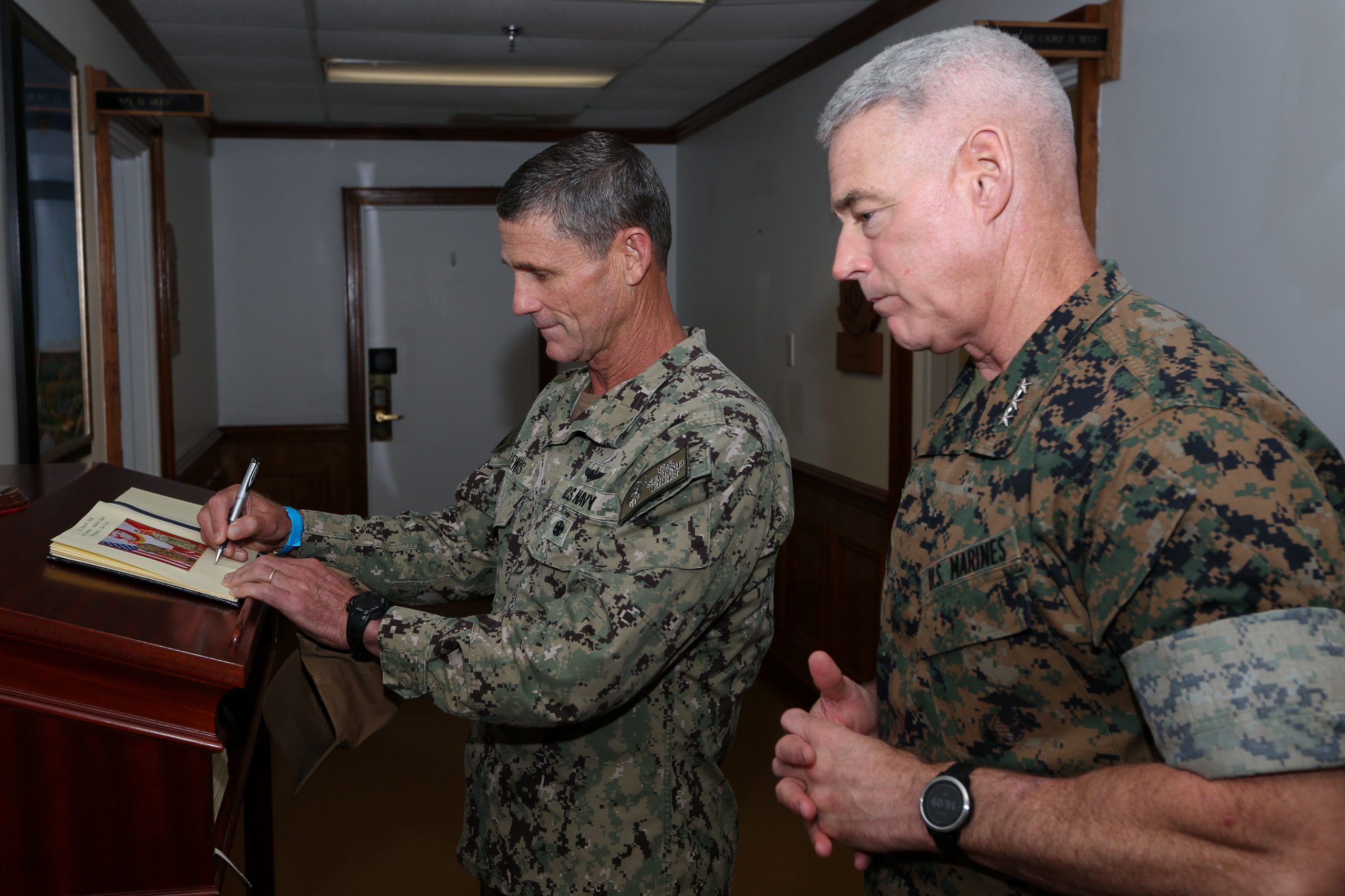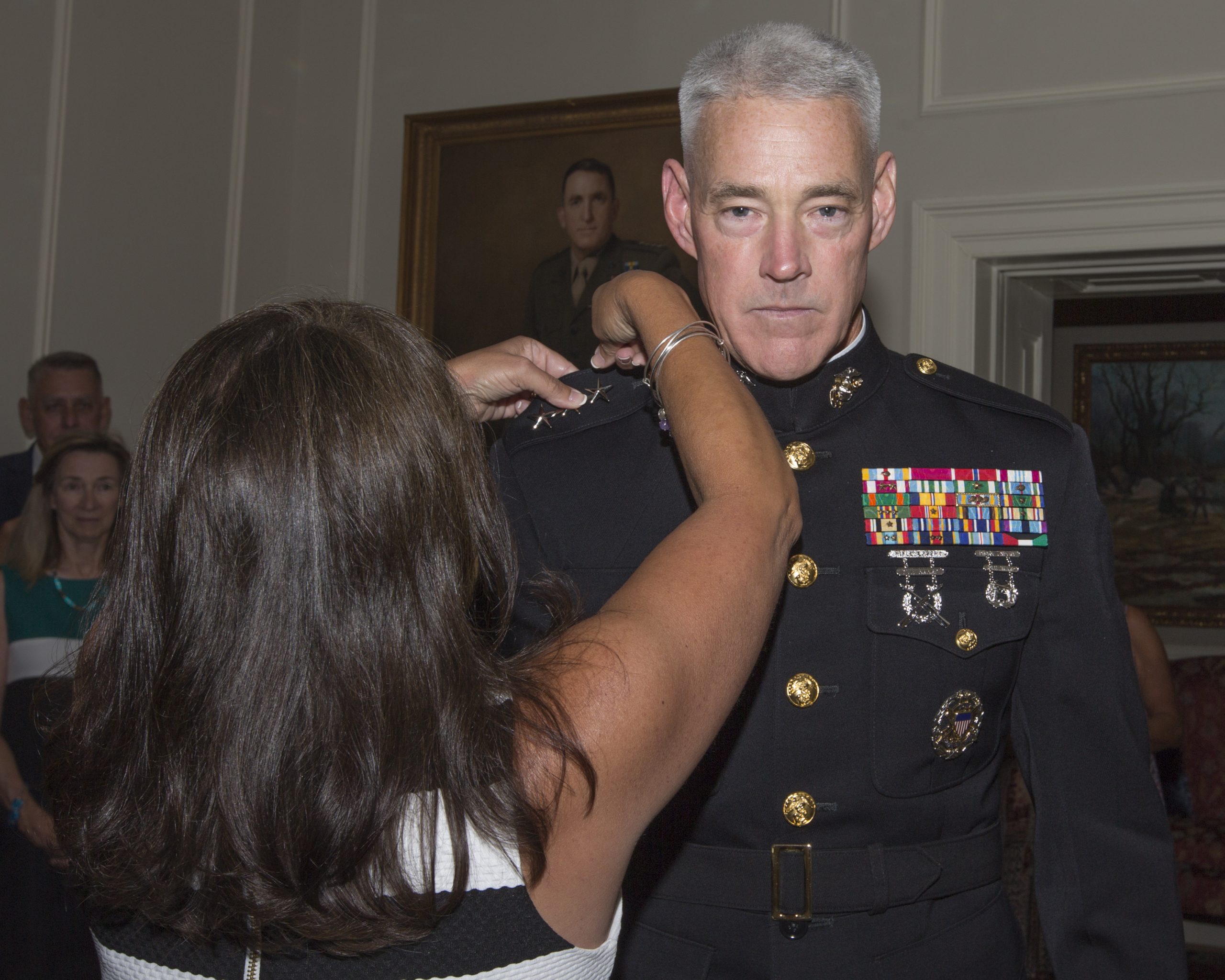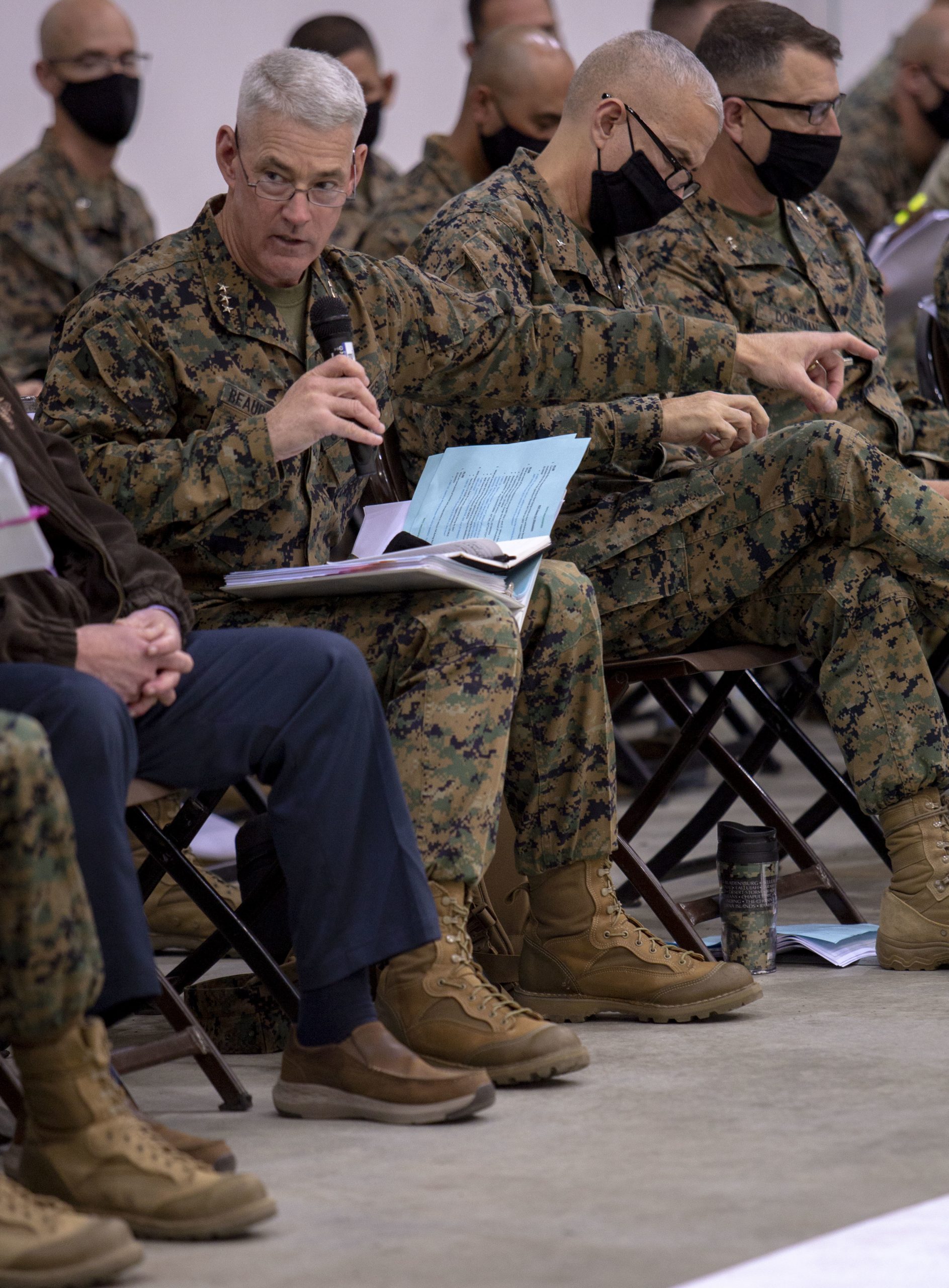By Robbin Laird
I first met Lt. General Beaudreault during my visit to II MEF in April 2021. I returned on June 29, 2021 prior to the General’s retirement in July. We discussed the evolution of the II MEF with the U.S. Navy and a recent agreement to shape a joint task force between 2nd ESG and 2nd MEB and that is discussed in a separate article.
At the end of the meeting, I asked him to look back on the evolution of the USMC during his time of service, and to provide some thoughts about the challenges going forward. As his career spanned the end of the Cold War and the global competition with a peer competitor, through the long period of the priority on the Middle Eastern land wars, and now with the return of global competition but this time now with peer competitors, his thoughts are especially helpful as we refocus on the new strategic context.
Lt. General Beaudreault: “As I reflect on my time with the USMC, the most capable USMC during my time of service was the force in being we had in the 1988 through 1991 period. I should be clear at the outset I am not suggesting the Marines of today are not as capable as those in that period. I am referring to the size and capabilities we had available to us at the end of the Cold War.
“We were very lethal, agile, and combat flexible. In terms of naval integration, we had MEB elements which Saddam had to consider to be a serious threat of amphibious invasion. We could do either deception or forcible entry. We had a much more robust amphibious capability than today.
“We had a significant Force Reconnaissance capacity organic to the USMC. They embarked as part of the force and relationships are important in this business. There was nothing like having them eat in the wardroom or on the mess decks and interact with those that they supported. They were trained in in–extremis hostage rescue, ship take-downs, gas-oil platform seizures and in combination with the embarked SEALS were a tremendously capable force. Some of those skills have migrated to special operations forces which are not always co-located or physically present for integrated crisis planning.”
“That was a very, very capable Marine Corps. For example, Force Reconnaissance had an ability to conduct insertion operations out of submarines, that might come in handy in the future. We need to recover some of that capability.”
With the coming of 9/11 and the focus on counter-insurgency and counter-terrorism, the mission focus changed significantly. The Marines, out of necessity, supplemented what the U.S. Army and the nation required in order to be successful in those wars.
But as the Marines now re-focus on the challenge of dealing with peer competitors, how best to do so?
Lt. General Beaudreault: “The Commandant is dealing with the challenge of making hard choices about the way ahead. But the nation needs to realize that we need a larger USMC to do our job more effectively. We need a bigger Marine Corps. We need a bigger amphibious fleet. We need a bigger Navy.
“We are a maritime nation, but with the force we have, we have limited shock absorption capability. Where’s the shock absorption capacity? If we have to replace the number of combat losses we might experience in a peer to peer conflict, how are we going to do so? How do you sustain the fight? That gets into the industrial base and all other areas. We don’t have enough shock absorption capacity in the department right now, in my view.
“We have just enough to meet requirements and get to a one to three deployment to dwell ratio under the current steady state environment. We’ve got enough to generate combat replacements. But creating whole cloth units is going to be challenging. And I’m very concerned about if we take losses, the ability to rapidly replace those losses. And the affordability and time factors that go with our modernization and fielding in having to replace our damaged equipment.
“What I worry about, it’s insufficient capacity. And after your initial salvos, what’s the buy look like?
“I do like the conceptual pieces of where the Commandant’s going under his Force Design 2030 initiatives. I think you can complicate the adversary’s targeting with some discreet units that are out there. But not everybody can be like MARSOC with small teams that are going to have this effect. I do share some of the concerns on how you sustain distributed forces.
“I think the strength of the Corps, as compared to the Army, is our relationship with the Navy and the organic mobility we get out of our sea lift. We are facing a declining amphibious fleet with potential decommissioning of the LSDs, that’s a concern. What impact will this have on the nation and the nation’s ability to have the Marine Corps-Navy team deploy to the crisis with sufficient shock absorption capability in the event we take some losses due to adversary action?”
The air power transformation the Marines have gone through over the past twenty years, with the coming of the Osprey, then the F-35B and now the CH-53K transforms what an integrated Marine Corps-Navy team can bring to crisis management, but II MEF does not yet have F-35s in its force and currently is relying on allied F-35s to play their role.
Lt. General Beaudreault: “By 2024, we start replacing our fighters at 2nd MAW with F-35s and should be full up by 2030. USMC F-35s have been prioritized for the Pacific, but this creates some challenges for us. The Harriers and the F-35s are not the same at all, and our deployments in the Atlantic region without F-35s creates a gap. But we are getting the CH-53Ks into our force as the initial operating force which will clearly augment our ability to provide greater capability to operate in the air-sea-ground domain as well.”
And I would add that when 2nd ESG and 2nd MEB were operating together in the recent BALTOPS 50 exercise that included the F-35 piece of integrated operations, they were provided by a core ally. Brigadier General Marcus Annibale, Chief of Staff, Naval Striking and Support Forces NATO provided details on this development in an interview during the exercise. Brigadier General Annibale is an experienced Harrier and F-35B operator, and he noted that the F-35 participated for the first time in a BALTOPS exercise, and the F-35s in the exercise were Norwegian.
He noted not only did they participate and provide the unique capabilities of fifth generation aircraft, but are providing data into the operating force networks. “They were completely included in our link network. The fact that they were in our link architecture was almost as big a win as just having the airplane play.”
In short, Lt. General Beaudreault has lived through the last peer fight and led the II MEF in its initial process of adapting to the new strategic context. As he underscored: “We’re all watching China, but you know what? There’s another actor out there who merits watching.”
Lt. General Beaudreault retired from the USMC on July 9, 2021.
Lt. General Beaudreault’s presentation to the 2018 Surface Navy Association can be viewed below:


